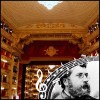Composers
Bizet was born in 1838 in one of Paris streets, Tour d'Auvergne 28 in the 9th arrondissement. His legal name was Alexandre César Léopold Bizet, but after his baptism on 16 March 1840 his first name became Georges, and he was always known thereafter as Georges Bizet. He was the son of an amateur singer and composer Adolphe Armand Bizet (1810-86), and Aimée Léopoldine Joséphine née Delsarte (1814-61), the sister of the famous singing teacher François Delsarte.
At the age of ten he entered the Paris Conservatory of Music. His teacher in fugue and counterpoint was Pierre Zimmerman, who was often assisted by his son-in-law, Charles Gounod; in piano - Antoine François Marmontel, in organ -François Benoist and, after Zimmerman's death, Fromental Halévy, his future father-in-law. In 1855 he won first prizes for organ and fugue and also he completed his earliest famous compositions.
In 1933 in the archives of the Paris Conservatory library was discovered his first symphony, the Symphony in C, which was written at the age of seventeen in November 1855, evidently as a student task. After its first performance in 1935, it became a masterwork of his early Romantic period. Some listeners can find a stylistic similarity to the first symphony of Charles Gounod, which was played earlier in the same year, and to music of Franz Schubert, although his music was unknown at the time the symphony was written. Nevertheless Bizet arranged his symphony for two pianos.
The staging of his one-act operetta Le docteur Miracle in 1857 brought him a prize offered by Jacques Offenbach. Due to scholarship of the Prix de Rome, he studied three years in Rome where he had an opportunity to develop his talent and where he wrote his marvelous opera buffa Don Procopio (1858-59). His greatest masterpiece Te Deum, which was published only in 1971, was also written at that time to the Prix Rodrigues competition, which was failed. Except these three years in Rome, he spent all his life in the Paris area.
While travelling in Italy in July 1860, he wanted to write a symphony in which four Italian cities - Rome, Venice, Florence and Naples would find their musical reflection. But he had to stop his tour because of his mother's serious illness and come back to Paris. A year later his mother passed away. By November 1861 the Scherzo of the symphony was completed, but the whole symphony appeared in 1866. He reviewed it several times to 1871, but couldn’t complete it. He died and his symphony is described as "unfinished", but it is wrong because it was fully scored. In 1880 the Roma Symphony was published.
In June 1862 the family maid, Mary Reiter, gave birth to a son, Jean. The boy believed that he was Georges's Bizet brother, until he knew that he was Bizet's son. After death of his former teacher Halévy in 1862 , Bizet completed his last opera Noé, which was published only after own death in 1885.
In 1863 he composed a romantic opera Les pêcheurs de perles (The Pearl Fishers) for the Théâtre Lyrique, it was a drama of love and ritual in Ceylon but it was initially a failure. In addition he organized two of Ambroise Thomas's operas for both solo and duo piano in 1866. His works written in the earlier period show his talent for embodiment the atmosphere of work, for example such as La jolie fille de Perth (after Walter Scott's novel), and a Roma symphony (1868). These works were not fully successful, but nevertheless Bizet was a respected composer.
On 3 June 1869, Bizet married Geneviève (1849-1926), the daughter of his late teacher Fromental Halévy. As some famous composers, Bizet became a member of French National Guard at the beginning of the Franco-Prussian War in July of 1870. This had an influence on his progress on several works. Bizet and his wife had to leave Paris, to escape the violence, as a result of civil uprising in 1871, which lasted two months. Later on Bizet till his death was a member of the Conservatoire examination committees for composition, counterpoint and fugue, and for piano and harp.
During all his life he created a lot of wonderful works. It is Jeux d'enfants (Children's games) for piano duet in 1871. He was a creator of the one-act opéra comique Djamileh(22 May 1872), which is often compared with Carmen. He wrote an overture Patrie in 1873(it schouldn’t be confused with Victorien Sardou's play Patrie!). He was the author of incidental music for a play L'Arlésienne by Alphonse Daudet, which was performed on 1 October 1872. Later he made the first part of a L'Arlésienne Suite from the music, the second part was created by Ernest Guiraud. Both works were rewritten many times, but many performances of the second suite didn’t mention of Guiraud's contribution.
The most famous works of Bizet is Carmen (1875), which is based on Prosper Mérimée’s novella written in 1846. Bizet started to work over a title role for a mezzo-soprano in 1873, but because of parting with his wife for two months, he had finished this work only by the end of 1874. The premiere of Carmen was on 3 March 1875, but in spite of it hadn’t a great success on the first time, but during next three months this performance ran three times a week and it was Bizet's best work. Carmen was Bizet’s creation in which he put his whole soul, but such perception of his work by audience was a great disillusionment for him. Only his famous contemporaries including Debussy, Saint-Saëns and Tchaikovsky estimated at Carmen’s true worth. After visiting nearly twenty performances of Carmen Brahms considered it the greatest opera in Europe since the Franco-Prussian War. All these composers were right, because Carmen was the most popular opera in the world. It contains two of Bizet's most famous songs, the "Habanera" and "The Toreador's Song", which compete for popularity with the tenor-baritone duet "In the depths of the temple" from The Pearl Fishers.
Bizet died from a heart attack at the age of 37 on his sixth wedding anniversary in Bougival (Yvelines) without having seen Carmen’s triumph. It was time when he found his own inimitable style. He was buried in the Père Lachaise Cemetery in Paris. After his death the Carmen’s fate was predetermined, it was dropped by the Opéra-Comique. Some years later it had made its way to Vienna and Brussels, London and New York, and then it returned to Paris, where it was waited by a success. Nowadays it is one of the world's best-loved operas.
Bizet’s widow Geneviève later had an alliance with Élie-Miriam Delaborde, who from hearsay was the illegitimate son of Charles-Valentin Alkan. Also she married a banker Émile Straus and became a noted society hostess. She was used by Marcel Proust as a model for the Duchesse de Guermantes in his roman fleuve À la recherche du temps perdu. In addition Proust had been a school-friend of Jacques (1872-1922), the Bizets' son.
In the twentieth century Bizet's wonderful music has been used in several important ballets. In the Soviet-era (1967), the music from Carmen was used by Rodion Shchedrin, and a part, which was choreographed by Alberto Alonso, have been played by the Bolshoi ballerina Maya Plisetskaya brought her a great success. Bizet’s works are also well-known in the West, the L'Arlesienne of Roland Petit is well-regarded by the audience. His first work Symphony in C by George Balanchine, which was first presented as Le Palais de Crystal by the Paris Opera Ballet in 1947, is considered to be one of the greatest ballets of the twentieth century. The ballet has no history; it is the music: each sound of the symphony has its own ballerina, cavalier, and corps de ballet, all of whom dance together in the finale.
But nobody could be compared with Bizet as a pianist. He wished about a career of a concert pianist. He showed his mastery at a dinner party at the Halévys on 26 May 1861, at which Franz Liszt was present, giving faultless performance of an elaborate work of Liszt's, reading at sight from the unpublished manuscript. He was proclaimed as one of the three finest pianists in Europe. His skill was also praised by Hector Berlioz, his teacher Marmontel, and many others.
Recently Added
Biography
Bizet was born in 1838 in one of Paris streets, Tour d'Auvergne 28 in the 9th arrondissement. His legal name was Alexandre César Léopold Bizet, but after his baptism on 16 March 1840 his first name became Georges, and he was always known thereafter as Georges Bizet. He was the son of an amateur singer and composer Adolphe Armand Bizet (1810-86), and Aimée Léopoldine Joséphine née Delsarte (1814-61), the sister of the famous singing teacher François Delsarte.
At the age of ten he entered the Paris Conservatory of Music. His teacher in fugue and counterpoint was Pierre Zimmerman, who was often assisted by his son-in-law, Charles Gounod; in piano - Antoine François Marmontel, in organ -François Benoist and, after Zimmerman's death, Fromental Halévy, his future father-in-law. In 1855 he won first prizes for organ and fugue and also he completed his earliest famous compositions.
In 1933 in the archives of the Paris Conservatory library was discovered his first symphony, the Symphony in C, which was written at the age of seventeen in November 1855, evidently as a student task. After its first performance in 1935, it became a masterwork of his early Romantic period. Some listeners can find a stylistic similarity to the first symphony of Charles Gounod, which was played earlier in the same year, and to music of Franz Schubert, although his music was unknown at the time the symphony was written. Nevertheless Bizet arranged his symphony for two pianos.
The staging of his one-act operetta Le docteur Miracle in 1857 brought him a prize offered by Jacques Offenbach. Due to scholarship of the Prix de Rome, he studied three years in Rome where he had an opportunity to develop his talent and where he wrote his marvelous opera buffa Don Procopio (1858-59). His greatest masterpiece Te Deum, which was published only in 1971, was also written at that time to the Prix Rodrigues competition, which was failed. Except these three years in Rome, he spent all his life in the Paris area.
While travelling in Italy in July 1860, he wanted to write a symphony in which four Italian cities - Rome, Venice, Florence and Naples would find their musical reflection. But he had to stop his tour because of his mother's serious illness and come back to Paris. A year later his mother passed away. By November 1861 the Scherzo of the symphony was completed, but the whole symphony appeared in 1866. He reviewed it several times to 1871, but couldn’t complete it. He died and his symphony is described as "unfinished", but it is wrong because it was fully scored. In 1880 the Roma Symphony was published.
In June 1862 the family maid, Mary Reiter, gave birth to a son, Jean. The boy believed that he was Georges's Bizet brother, until he knew that he was Bizet's son. After death of his former teacher Halévy in 1862 , Bizet completed his last opera Noé, which was published only after own death in 1885.
In 1863 he composed a romantic opera Les pêcheurs de perles (The Pearl Fishers) for the Théâtre Lyrique, it was a drama of love and ritual in Ceylon but it was initially a failure. In addition he organized two of Ambroise Thomas's operas for both solo and duo piano in 1866. His works written in the earlier period show his talent for embodiment the atmosphere of work, for example such as La jolie fille de Perth (after Walter Scott's novel), and a Roma symphony (1868). These works were not fully successful, but nevertheless Bizet was a respected composer.
On 3 June 1869, Bizet married Geneviève (1849-1926), the daughter of his late teacher Fromental Halévy. As some famous composers, Bizet became a member of French National Guard at the beginning of the Franco-Prussian War in July of 1870. This had an influence on his progress on several works. Bizet and his wife had to leave Paris, to escape the violence, as a result of civil uprising in 1871, which lasted two months. Later on Bizet till his death was a member of the Conservatoire examination committees for composition, counterpoint and fugue, and for piano and harp.
During all his life he created a lot of wonderful works. It is Jeux d'enfants (Children's games) for piano duet in 1871. He was a creator of the one-act opéra comique Djamileh(22 May 1872), which is often compared with Carmen. He wrote an overture Patrie in 1873(it schouldn’t be confused with Victorien Sardou's play Patrie!). He was the author of incidental music for a play L'Arlésienne by Alphonse Daudet, which was performed on 1 October 1872. Later he made the first part of a L'Arlésienne Suite from the music, the second part was created by Ernest Guiraud. Both works were rewritten many times, but many performances of the second suite didn’t mention of Guiraud's contribution.
The most famous works of Bizet is Carmen (1875), which is based on Prosper Mérimée’s novella written in 1846. Bizet started to work over a title role for a mezzo-soprano in 1873, but because of parting with his wife for two months, he had finished this work only by the end of 1874. The premiere of Carmen was on 3 March 1875, but in spite of it hadn’t a great success on the first time, but during next three months this performance ran three times a week and it was Bizet's best work. Carmen was Bizet’s creation in which he put his whole soul, but such perception of his work by audience was a great disillusionment for him. Only his famous contemporaries including Debussy, Saint-Saëns and Tchaikovsky estimated at Carmen’s true worth. After visiting nearly twenty performances of Carmen Brahms considered it the greatest opera in Europe since the Franco-Prussian War. All these composers were right, because Carmen was the most popular opera in the world. It contains two of Bizet's most famous songs, the "Habanera" and "The Toreador's Song", which compete for popularity with the tenor-baritone duet "In the depths of the temple" from The Pearl Fishers.
Bizet died from a heart attack at the age of 37 on his sixth wedding anniversary in Bougival (Yvelines) without having seen Carmen’s triumph. It was time when he found his own inimitable style. He was buried in the Père Lachaise Cemetery in Paris. After his death the Carmen’s fate was predetermined, it was dropped by the Opéra-Comique. Some years later it had made its way to Vienna and Brussels, London and New York, and then it returned to Paris, where it was waited by a success. Nowadays it is one of the world's best-loved operas.
Bizet’s widow Geneviève later had an alliance with Élie-Miriam Delaborde, who from hearsay was the illegitimate son of Charles-Valentin Alkan. Also she married a banker Émile Straus and became a noted society hostess. She was used by Marcel Proust as a model for the Duchesse de Guermantes in his roman fleuve À la recherche du temps perdu. In addition Proust had been a school-friend of Jacques (1872-1922), the Bizets' son.
In the twentieth century Bizet's wonderful music has been used in several important ballets. In the Soviet-era (1967), the music from Carmen was used by Rodion Shchedrin, and a part, which was choreographed by Alberto Alonso, have been played by the Bolshoi ballerina Maya Plisetskaya brought her a great success. Bizet’s works are also well-known in the West, the L'Arlesienne of Roland Petit is well-regarded by the audience. His first work Symphony in C by George Balanchine, which was first presented as Le Palais de Crystal by the Paris Opera Ballet in 1947, is considered to be one of the greatest ballets of the twentieth century. The ballet has no history; it is the music: each sound of the symphony has its own ballerina, cavalier, and corps de ballet, all of whom dance together in the finale.
But nobody could be compared with Bizet as a pianist. He wished about a career of a concert pianist. He showed his mastery at a dinner party at the Halévys on 26 May 1861, at which Franz Liszt was present, giving faultless performance of an elaborate work of Liszt's, reading at sight from the unpublished manuscript. He was proclaimed as one of the three finest pianists in Europe. His skill was also praised by Hector Berlioz, his teacher Marmontel, and many others.







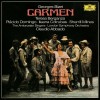







![The Opera Album 2011. [CD 1 of 2]](http://static.classicalm.com/repository/collection-cover/small/1344-img1369919954895586.jpg)
![The Opera Album 2011. [CD 2 of 2]](http://static.classicalm.com/repository/collection-cover/small/1345-img1369921777459572.jpg)

![Russian legends - Leonid Kogan [10 CD]](http://static.classicalm.com/repository/collection-cover/small/269-img1318707830156876.jpg)

![Great Voices Of The Century - Sopranos, The Greatest Arias [CD4 of 4]](http://static.classicalm.com/repository/collection-cover/small/1404-img1403279266849057.jpg)
![Deutsche Grammophon Classic Gold [CD 1 of 3]](http://static.classicalm.com/repository/collection-cover/small/1314-img1361380277394437.jpg)
![Top 100 der Klassik [CD 3 of 5]](http://static.classicalm.com/repository/collection-cover/small/1366-img1372593555699508.jpg)
![Top 100 der Klassik [CD 4 of 5]](http://static.classicalm.com/repository/collection-cover/small/1367-img1372594763111487.jpg)






![The Top 100 Masterpieces of Classical Music 1685-1928 [CD8of10]](http://static.classicalm.com/repository/collection-cover/small/1360-img1372447516287674.jpg)









![Roberto Alagna. Mes Plus Grands Roles A L'Opera [CD2 of 3]](http://static.classicalm.com/repository/disk-cover/small/3161-img1383837198247624.jpg)

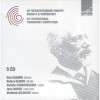







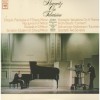

![The 100 Most Beautiful Melodies [CD 3 of 6]](http://static.classicalm.com/repository/disk-cover/small/2912-img1361461642604961.jpg)




























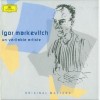

![Rita Streich - The Viennese Nightingale [CD 4 of 8]](http://static.classicalm.com/repository/disk-cover/small/3037-img1372357313822809.jpg)















![Herbert von Karajan - Sternstunden der Musik [CD3of3]](http://static.classicalm.com/repository/disk-cover/small/3679-img1406716183842579.jpg)









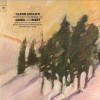














![Bizet - 'Carmen' [Seiji Ozawa, 1988]](http://static.classicalm.com/repository/composition-cover/small/22827-img1422701257610393.jpg)

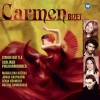


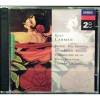

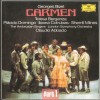




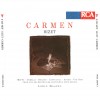







![Scherchen G.Bizet - L'Arlésienne [versions avec et sans récitant]](http://static.classicalm.com/repository/composition-cover/small/21953-img1416411185804371.jpg)

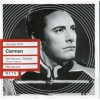










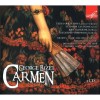
![Bizet - Carmen [Troyanos, Domingo; Solti]](http://static.classicalm.com/repository/composition-cover/small/22782-img1422533884334805.jpg)

